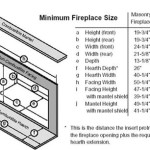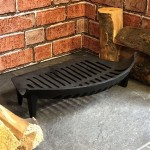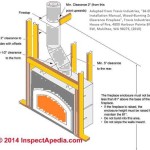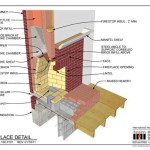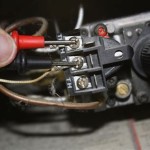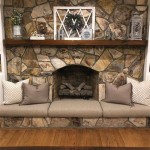Fireplace Insert Glass Replacement: A Comprehensive Guide
Fireplace inserts are designed to enhance the efficiency and aesthetic appeal of traditional fireplaces. A crucial component of these inserts is the glass panel, which allows for viewing the fire while containing sparks and directing heat into the room. Over time, this glass can become cracked, chipped, or clouded, necessitating replacement. Proper glass replacement is important not only for maintaining the fireplace's functionality but also for ensuring safety and optimal performance.
This article provides a detailed overview of fireplace insert glass replacement, including considerations for choosing the appropriate glass, a step-by-step guide to the replacement process, and essential safety precautions. The information presented aims to equip homeowners with the knowledge to confidently address this maintenance task or make informed decisions when hiring a professional.
Understanding the Need for Replacement
Several factors can lead to the need for fireplace insert glass replacement. Accidental impacts, such as striking the glass with a log or tool, are a common cause of cracks or shattering. High temperatures and rapid temperature changes can also stress the glass, leading to hairline fractures that gradually worsen over time. Overfiring the fireplace, exceeding the recommended fuel load, is another potential cause of glass damage. Additionally, improper cleaning methods, using abrasive cleaners or sharp objects, can scratch and weaken the glass. Clouding, caused by residue buildup or chemical reactions, can also impair visibility and necessitate replacement.
Ignoring cracked or damaged glass poses significant safety risks. A compromised glass panel can allow sparks and embers to escape, potentially igniting nearby flammable materials. It also reduces the fireplace insert's efficiency, diminishing heat output and increasing fuel consumption. Furthermore, a weakening glass panel is more likely to fail catastrophically, posing a risk of injury.
Selecting the Correct Replacement Glass
Choosing the right replacement glass is crucial for ensuring the fireplace insert's safe and efficient operation. Standard window glass is not suitable for this application due to its inability to withstand high temperatures. Fireplace inserts require specialized high-temperature glass, often referred to as ceramic glass or pyroceram glass. These materials are engineered to withstand extreme heat and rapid temperature changes without cracking or shattering.
When selecting replacement glass, it is essential to determine the exact type and thickness required for the specific fireplace insert model. This information is typically found in the fireplace insert's owner's manual or on a label attached to the original glass. Using the wrong type of glass can be dangerous and may void the manufacturer's warranty. It is also critical to measure the existing glass accurately to ensure a proper fit. Ordering glass that is too large or too small will prevent a secure seal and compromise the fireplace insert's performance.
There are generally two types of ceramic glass available: one that is more heat resistant and another that is more impact resistant. Depending on the specific fireplace design and expected usage, the appropriate type of glass should be selected. Consulting with a fireplace insert specialist or contacting the manufacturer can provide valuable guidance in choosing the correct replacement glass.
Step-by-Step Guide to Replacing the Glass
Replacing fireplace insert glass is a task that can be undertaken by homeowners with some DIY experience. However, it requires careful attention to detail and adherence to safety precautions. Before beginning the replacement process, ensure the fireplace is completely cool and disconnected from any power source, if applicable.
Step 1: Removal of the Old Glass: Carefully remove the screws or retaining clips that hold the glass in place. These may be located around the perimeter of the glass frame. If the screws are corroded or difficult to remove, use a penetrating oil to loosen them. Once the screws are removed, gently lift the old glass out of the frame. Be cautious, as the glass may be broken or sharp.
Step 2: Cleaning the Frame: Thoroughly clean the glass frame to remove any debris, ash, or old gasketing material. Use a wire brush or scraper to remove stubborn residue. Ensure the frame is clean and smooth to provide a proper surface for the new gasketing material.
Step 3: Applying New Gasketing Material: Apply new gasketing material around the perimeter of the glass frame. Gasketing material is a heat-resistant rope or tape that creates a seal between the glass and the frame, preventing air leaks and ensuring optimal combustion. Ensure the gasketing material is properly sized and applied evenly for a secure seal. Follow the manufacturer's instructions for the specific gasketing material being used.
Step 4: Installing the New Glass: Carefully position the new glass into the frame, ensuring it sits squarely and evenly on the gasketing material. Secure the glass in place by reattaching the screws or retaining clips. Tighten the screws evenly to avoid putting undue stress on the glass. Do not overtighten the screws, as this can crack the glass.
Step 5: Testing the Seal: After installing the new glass, inspect the seal around the perimeter to ensure there are no gaps or leaks. A simple test involves lighting a small match or lighter near the edges of the glass. If the flame flickers or is drawn inward, it indicates an air leak that needs to be addressed. Adjust the gasketing or tighten the screws as needed to create a complete seal.
If any part of the process feels overwhelming or if you are uncertain about your ability to complete the task safely, it is best to consult with a qualified fireplace technician.
Essential Safety Precautions
Fireplace insert glass replacement involves potential hazards, including broken glass and exposure to potentially harmful dust and debris. Wearing safety glasses and gloves throughout the entire process is important to protect your eyes and hands. A dust mask or respirator is also recommended to prevent inhaling dust or fiberglass particles from the old gasketing material. Dispose of the old glass properly by wrapping it securely in cardboard or newspaper and labeling it as "broken glass" to prevent accidental injuries. When working with tools, follow manufacturer's instructions and exercise caution to avoid cuts, slips, or other accidents.
Proper ventilation is crucial during the cleaning and installation process. Open windows or use a fan to ensure adequate airflow. After completing the replacement, allow the fireplace insert to cure for several hours before lighting a fire. This allows the gasketing material to properly adhere to the glass and frame. During the initial few burns, monitor the glass closely for any signs of stress or cracking. If any issues arise, extinguish the fire immediately and consult with a fireplace professional.

Wood Stove Glass Replacement Free One Day

Stove Glass Fiachra Insert Stovepartsdirect Ie

Everything You Need To Know About Fireplace Glass Door Replacement Demers

Fireplace Glass Doors Vs Screens Full Service Chimney

Fireplace Glass Replacement Me And My

Everything You Need To Know About Fireplace Glass Door Replacement Demers

Fireplace Replacement Glass Marion And Mirror

Maintenance Of Modern Stoves Fireplaces And Inserts

Regency Glass Replacement Hi300 Wood Insert With Grills 940 339 P

4 Reasons Fireplace Glass Doors Break How To Fix It Tips
Related Posts

